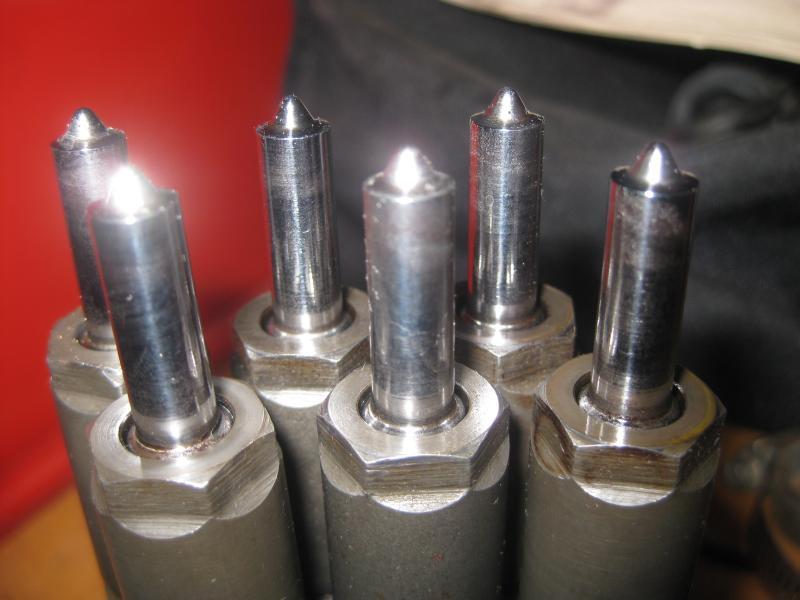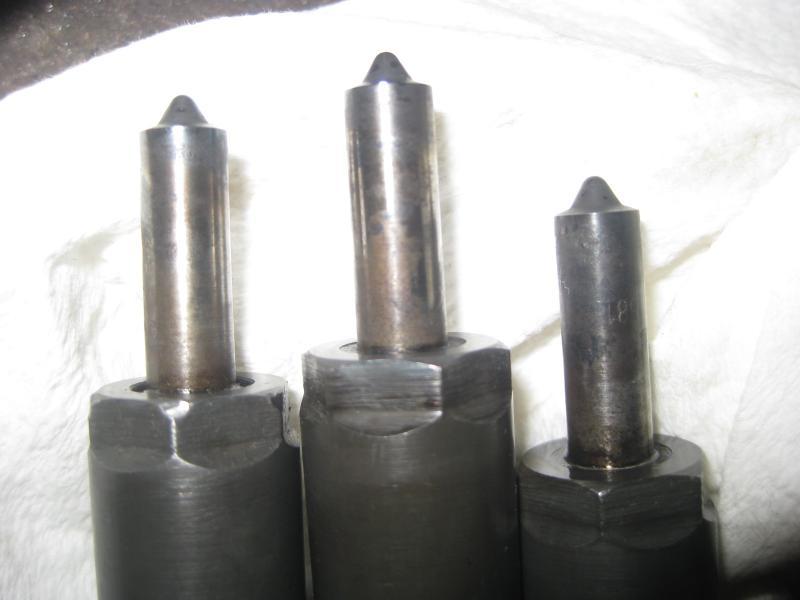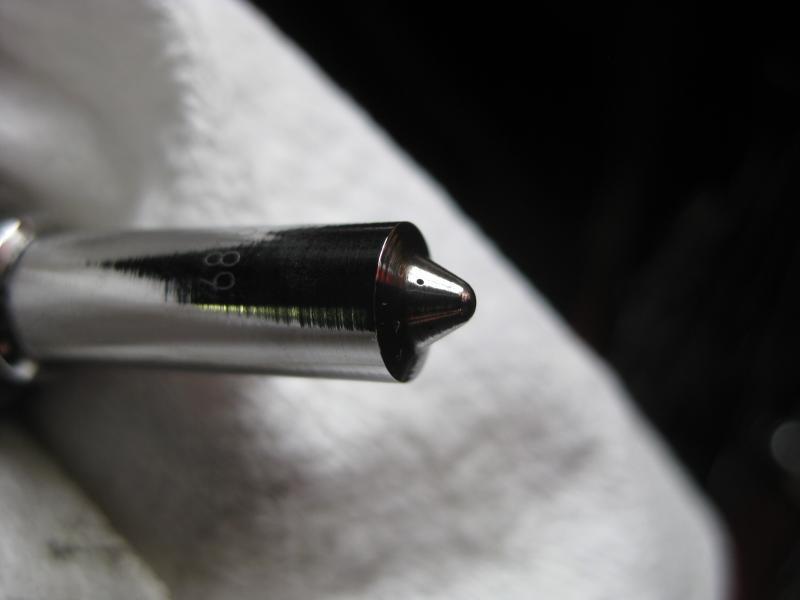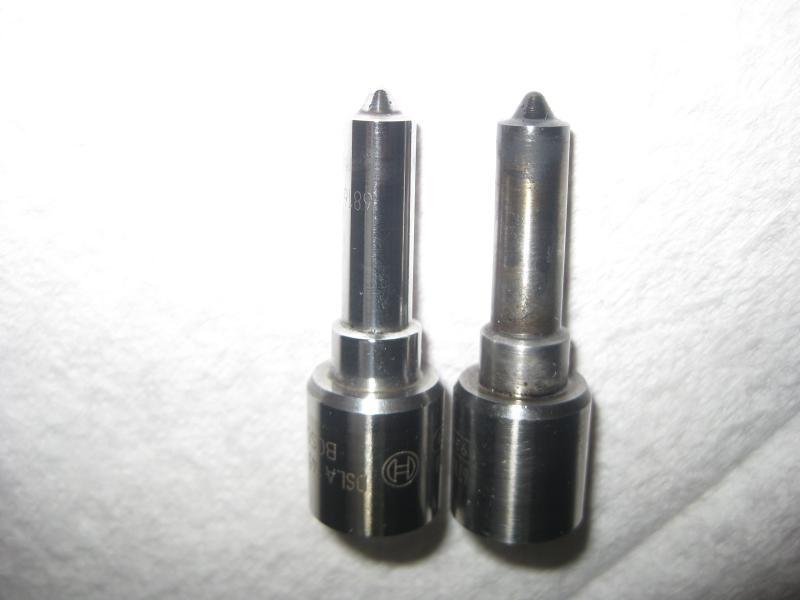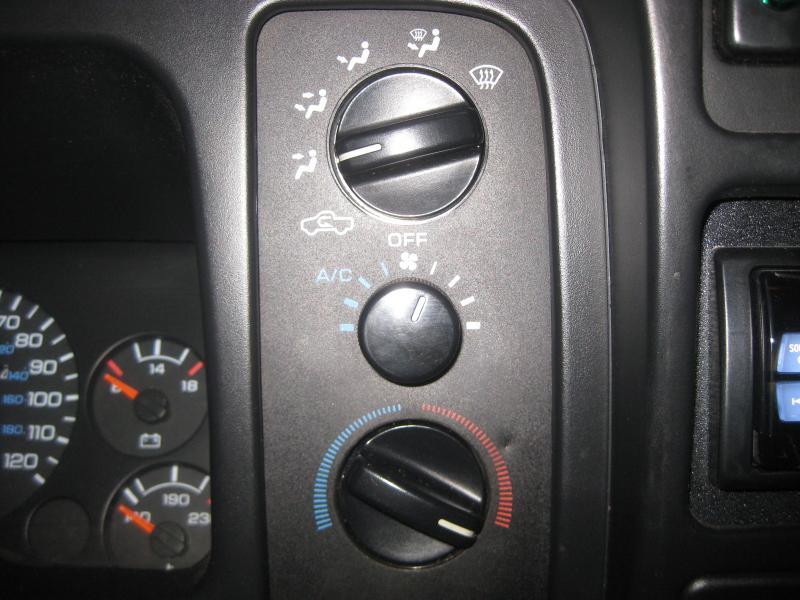Everything posted by ISX
-
MPG fooler - Design phase
I got several things to talk about now :hyper:First off, I did some research and found the VP44 advances a LOT for starting in the cold and retards as the engine warms up in order to meet NOX standards. Fuel temperature also contributes to what the timing is. All of this just reinforces what Mike has told me so at least I am getting the same story everywhere. Fuel temp is cold in winter too so I wonder how much of a difference that makes. I don't know how cold the fuel runs in relation to ambient when it is below freezing out. John had a fuel temp sensor on that edge juice and I think I was seeing 20-30F over ambient just driving around, but that was at 70F, I want to know how warm it gets in the freezing temps. Secondly, I had to go to Jeff City to get myself xmas presents and I was already topped off so I decided to see if I could match the 27mpg I got at 90F in the summer at 55mph. So off I went, 55mph the entire way. My cruise control is really screwy lately so this time I used my foot, last time was with the cruise. Here is what I got, I was sitting at the pump when I made it: That's actually the same thing I got in the summer.. +- 0.1mpg. Can't remember the exact number last time, think it was 0.1mpg less than this time. It was 25F, NO winter front. Now if the BTU is truly less in the winter, that proves that the engine is more efficient with the colder air going into it, to the point that it makes up for the loss in MPG that you would normally see from the BTU loss. I have proved this twice now (nebraska run also). It was 25F with no winter front that time as well, interestingly enough. Mike has yet to give me answer to whether he is running his bigger tires or not but even so, that is a HUGE mpg difference from what he is getting at the same speed (55). Makes me think there is a lot more to the picture than just the IAT. I am going to keep thinking about this, there just has to be more to it, just HAS to be
-
MPG fooler - Design phase
Building that much boost it should be at the same hot temp on the top end as we are fooling it to. You could turn the fooler off and it would probably be the same temp, creating boost creates heat.. I am still thinking of other things that are degrading you guys. I think Mike actually was running his bigger tires which is why his mileage start point was only 13mpg. So if he had his small tires he would have started at 18 I am guessing. --- Update to the previous post... You spent a week putting that together I thought you had a whole switch contraption made for it! Now I am disappointed in you I figured you would turn the switch off for normal IAT then once it was started and run for a min, flip it.
-
Wellll, I can't compete with this..
There were 4 of these A10's you can see the other one at the bottom, I ran out after the first 2 had flew over and just happened to have my cam in my pocket. Compared to the videos of my truck running without the compressor housing, ehhhhh I think they got me beat Time for a bigger turbo
-
MPG fooler - Design phase
Yes I realize that. But it was not truly 132F.. So I am thinking the engine does something in the summer that doesnt necessarily make more boost, but since the air was actually cold, it ended up building more boost. What it actually did though, I am searching for What was the actual temp anyways? You say fooled 13F. Was it 30F out?
-
MPG fooler - Design phase
I find that part interesting and makes me think some more.. If yours run off of ECT and IAT for the grids, I am wondering if the ECT also ties into the mix with the timing. It would only matter during warm up and you would have to just instantly fool it into thinking it was 195F and see if the warm up mpg's went up even more. But I think this is kinda a waste of time to try and go that far just for warmup so I wouldn't bother, but I am betting it ties into it a little. If you are getting in it and going so the engine is 30F also, you could flip that 123F switch for a while and see if it does anything Now the boost thing is something else that is incredibly interesting and gives more clues. I gotta do some more searching and reading and figure out exactly what that pump does with timing if it is cold/hot IAT's. I *think* whatever it does with high IAT's is not supposed to raise boost like that, but because you fooled it, the ACTUAL cold intake air has the effect of producing more boost.
-
MPG fooler - Design phase
That is the part I don't get. I believe the cold air being more dense means the fuel is injected and able to ignite better since there is more air molecules in there to feed the fire. I think it runs leaner in the winter than summer because of this. It also explains why it seemingly has more power. I really think it makes it more efficient. I only think this because there is the drop in BTU content in the winter fuel, so how would I remain at the same mpg?, making me think it is making up for the loss in BTU by burning more efficiently.
-
MPG fooler - Design phase
I have no proof on the winter front and IAT... But I did use an IR temp thing on the driver and passenger side of the intercooler and did see a big difference (like 20F). So I am convinced it DOES do a little for IAT's. I am just not certain if warming them up is a good thing, I mean I got the same mileage without them at 25F.. I think the colder air adds power based on seat of pants (so I could be wrong there). The 12V doesn't care what the IAT is and since it feels like there is more power I think the front doesn't need to be there. The only reason it is there is for the 24V's to get their IAT temp up and get into the mileage tuning of things. So fool it and take the front off and you will have your mileage back and have more power. Mike told me before the engine warms up it advances timing a LOT. When it gets up to operating temp is when it starts to level out on mileage. Cold engines are not going to be efficient no matter what, and that is not what I am trying to fix. What I am trying to help you guys with is in the winter when the IAT's never get above that "mpg threshold", you drop 2mpg or so from the summer mileage. If you can make the engine "think" it is warm, it should bump the mileage back up. Sounds like it would be inefficient if it is fooled like that but mine is the same setting all year and obviously retains the same high efficiency all year long.
-
MPG fooler - Design phase
Mike says it is all for emissions.. Good for the DOT bad for the MPG's It won't do anything but make the timing whatever it was in the summer. Mine's the same all year and I never notice anything so I don't see any reason why a 24V would have any issues, other than more mpg's. I came up with the theory after seeing over and over that Mike said when he hit 100F IAT, his mileage shot up. Now when everything is warmed up, the ECT is the same on both our trucks, the boost is the same, everything is the same when they are warmed up. After driving to Nebraska and back getting the same mileage at 25F (no winter front) as I do in the summer, I knew something was going on with the 24V's. I have got the same mileage all year since I have owned the truck. The more you think about it you come to the conclusion that the IAT is the only thing different between winter and summer. It would be one thing if I saw a mileage drop as well, but something is wrong when he can hit 100F IAT and have his mileage increase. Thing is, it has to be 50F+ to hit that, so I think by fooling it he can get his mileage back in the winter, since that is essentially what my truck does, fools it all year long.
-
MPG fooler - Design phase
I doubt the battery ties into anything. I ripped mine out long ago and as much as every tiny little thing gets to me I would have noticed it. If the crack on my windshield moves a 1/4" overnight I will notice it :lmao:Hmm, my ECT is busted though and the grids still work as they should I bet it's not the same on the 12V's so yours might use all 3 sensors for all I know. This test will be interesting.
-
MPG fooler - Design phase
I pulled my IAT wire a while back when I was testing it and the grids were normal before starting, but then you would start it and the light would just blink. I think that's how it was anyways. Test it out some more, there has to be something as to why it does it in the drivethru in the winter when I turn it off for a sec, it goes through the post start crap again, but I don't think it does it in the summer, so it measures SOME sensor. I wonder if it is ECT on prestart and IAT on post start.. Hit both foolers
-
Injector Tip Cleaning
- Injector Tip Cleaning
What do you need to know? I just happen to be thinking of tearing it apart today, I have it out of the truck and everything. This is the carter mechanical lift pump..- Injector Tip Cleaning
- Injector Tip Cleaning
It is some kind of car polishing thing kinda like animal skin or something Paper towels didn't hold up and cloth stuff didn't cut it either, I needed something with a flat surface yet strong. That thing works perfect.- Injector Tip Cleaning
Got the other 3 out and did them. Noticed something interesting though. On the video you see how one didn't seal up.. These things are definitely finicky, I put these together with a ton of penetrating oil to try wash dirt away that I cant see and lube them up, this was after I sprayed break cleaner on them and blowed it off with the air compressor. I will take them out in a few months and see if it leaks again, I might have to try some new methods. I think the mill does a much better job than me doing it by hand. Only problem is that polisher gets in the holes, a lot of it. Air pressure doesn't really get it out so you have to stick the brake cleaner into the hole and spray it out and keep blowing out both sides until it is clear. Sticking the pintle in also squeezes a lot of it back out.- New member from Va.
Nice camper! Very nice truck too. Bet it pulls like a dream. Don't be afraid to post anything, we are here to help.Welcome to the site!- Injector Tip Cleaning
Found something the mill was good for Yes I know it knocks Those things are mirror perfect now. You can see how they were when I pulled them, and a comparison of a polished to before, and just a polished one.- Cummins Cold Starting/Diagnosis
I saw a lot of threads about this on other forums and people didn't know how it should be starting in the winter, what to check if it doesn't start right, etc. In the summer the engine compresses the air and it doesn't take much to make summer air hot enough to ignite the fuel. The cylinder walls and pistons are cold when you first start it and any heat from compression is absorbed through them. In the summer this isn't a concern since the rate of absorption is much less with things that are already hot. In the winter, the engine block will be whatever the ambient is. The colder it is the more it will take to get it started because the cylinder walls and piston are so cold that they easily absorb any heat from compression. To counter this issue, diesels have grid heaters or glow plugs. Glow plugs are inside the combustion chamber in about the same spot as where a spark plug would go on a gas engine. They glow red when they are on and try to heat the combustion chamber up. The grid heaters do the same thing but in a different manner. They are placed inside the intake horn and heat the incoming air up to be sucked into the combustion chamber. Both forms of combustion chamber heating are there for the same purpose, to heat the air up hot enough that it counteracts the cooling effect of the cylinder walls and pistons. By making the air hot, the heat of compression makes it even hotter and even with the walls and pistons will rob some heat, it stands a much better chance of starting than if it had no intake heater at all. Typical engine starts with the grid heater should be 1-2 cranks all the way down to 0F. I would say you could start at 1 crank with it brand new and give it 1 crank more for every 100k miles. So at 100k, 2 cranks is what it should take to start at 0F. At 200k, 3 cranks. 300k, 4 cranks.. That is just a rough estimate of what it should take to start it, every truck is different and depending on how they were cared for they may take a little longer to start. If you take care of your truck, it may hardly wear and you will not have to crank much more for every 100k you put it on it. My truck had 250k when I got it and there was a time when it would start without the grid heaters at 0F in half a crank with no smoke at all. So it is very possible to keep the compression good enough to accomplish that, but it is not recommended to skip the grids just to "see if it will start" as it is hard on it and will deteriorate compression over time from doing that. If the engine takes more than 10 cranks to start, something is probably wrong. The grid heaters may not be working which you can read up on them here: Grid Heaters Another possible cause is poor cranking speed which can be from a bad connection to the battery, bad batteries (or batteries that don't have a high enough cranking amp rating), a bad starter or bad starter contacts. More info on Voltage Drop (poor connections) / Starter / Starter Contacts. Fuel gelling can also be a possible cause. This shouldn't be a concern if your state experiences cold weather as the diesel stations should be putting in antigel, but sometimes even then there is an unexpected cold spell that may gel the fuel. If the truck starts then dies and you think it is gelled, check the fuel filter as it is probably clogged since gelled fuel will not flow through it. On 12 valves, timing can be a concern. It can slip and once it gets too far advanced or retarded, it will become very hard to start in the cold. Timing Info Oil can also be something of concern as too thick of oil may keep the truck from cranking over fast enough. Conventional (non-synthetic) oil has a pour point of around -20F, which means it can be used down to that point. Synthetic oil is around -40F. Conventional will be fine down to 0F. If you happen to live where the temps are consistently under 0F, you should consider synthetic to allow it to crank over easier and get oil pressure faster. Those are the causes of cold start issues. Don't forget about common start issues (any temp) that can also be the cluprit, such as air in the fuel lines. If you have a 24V, check for codes and look them up in the /forums/97-24-Valve-Error-Code-Shop">code section, ask questions if you still need help.- Odd Readings
Water hammer is like jumping on your bathroom scale a million times.. You can average out the bouncing and might get your weight but it will break the scale in no time. This doesn't matter if it is a mechanical or electric sender, they both cannot take the hammering.- Odd Readings
I think there is a pic floating around but maybe you can understand it if you work it out mentally. We know the fuel pressure hammer is what we don't want. We know the needle valve will stop it. So you would have your line running from the fuel system (which is hammering from the lift pump), then you would eliminate the hammer with the needle valve, then you would put the fuel sender on after the needle valve since it MUST NOT SEE THE HAMMER, so it goes AFTER the needle valve has eliminated it. It eliminates it by reducing the flow to the point that the bursts of pressure (the hammer) can not flow through the needle valve because the flow is almost next to nothing, so you get these positive spikes of pressure followed by a void, so you get a little pressure from the pressure spike and a void of pressure in between the pumping actions of the lift pump which gives you a fuel pressure that is basically the average of the void and the spike, because that is basically what the fuel system also sees. Now that you understand what you are trying to eliminate with the hammering effect and how everything works, you probably understand how to do it. If not, someone will have a pic or I will dig one up.- Need heat in my Cab
- Need heat in my Cab
- Need heat in my Cab
- When do you buy a new starter ?
The amps are there, I have several wires going to it. I am pretty sure that contact is just screwing me over.- When do you buy a new starter ?
Do the "Super Size Start Contacts" that have 90% more surface area make it crank a lot faster? Mine doesn't crank any faster with 5 batteries than it does with 2 and think the small contacts might be the reason. When I put that many batteries on my ford, it would crank over at idle speed - Injector Tip Cleaning
Account
Navigation
Search
Configure browser push notifications
Chrome (Android)
- Tap the lock icon next to the address bar.
- Tap Permissions → Notifications.
- Adjust your preference.
Chrome (Desktop)
- Click the padlock icon in the address bar.
- Select Site settings.
- Find Notifications and adjust your preference.
Safari (iOS 16.4+)
- Ensure the site is installed via Add to Home Screen.
- Open Settings App → Notifications.
- Find your app name and adjust your preference.
Safari (macOS)
- Go to Safari → Preferences.
- Click the Websites tab.
- Select Notifications in the sidebar.
- Find this website and adjust your preference.
Edge (Android)
- Tap the lock icon next to the address bar.
- Tap Permissions.
- Find Notifications and adjust your preference.
Edge (Desktop)
- Click the padlock icon in the address bar.
- Click Permissions for this site.
- Find Notifications and adjust your preference.
Firefox (Android)
- Go to Settings → Site permissions.
- Tap Notifications.
- Find this site in the list and adjust your preference.
Firefox (Desktop)
- Open Firefox Settings.
- Search for Notifications.
- Find this site in the list and adjust your preference.




